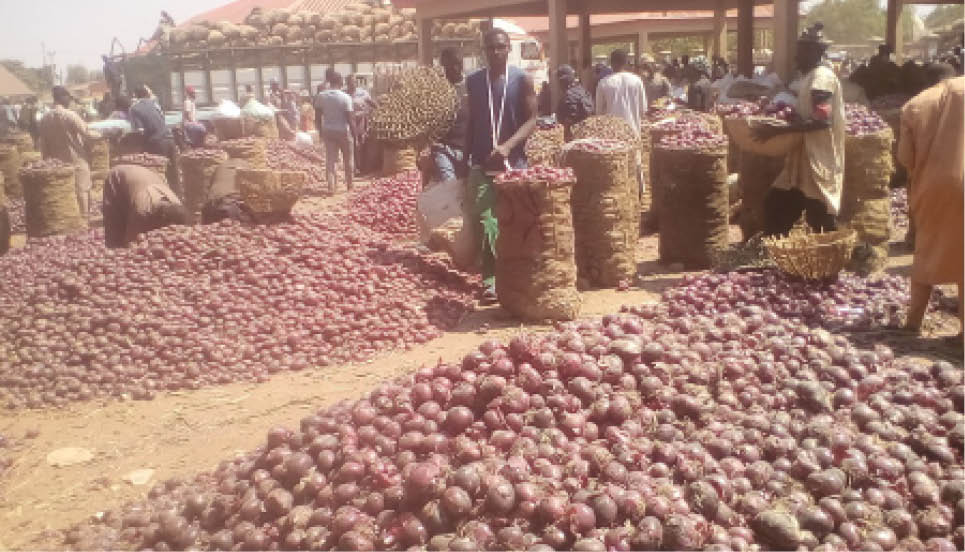What onion farmers must do to get bumper harvest
Onion is one of the most-prized crops because growers can make a fortune from them if they time the planting well. However, one of the challenges farmers growing the crop face is ending up with small bulbs. Here are few guidelines that make you excel in growing onion -Minimum tillage should be avoided in black […]

Onions on display at the market
Onion is one of the most-prized crops because growers can make a fortune from them if they time the planting well.
However, one of the challenges farmers growing the crop face is ending up with small bulbs.
Here are few guidelines that make you excel in growing onion
-Minimum tillage should be avoided in black cotton soil as ploughing the land ensures proper soil aeration. Also, incorporate well- manure into the soil before planting.
-Acquire seeds that are adapted to the ecological conditions of your location and ensure they are resistant to pests and diseases.
-One should also ensure that the land is well-levelled before planting as this ensures uniform growth and prevents waterlogging on sections of the farm.
-Drainage channels should be well done to ensure proper flow of water. It also helps when one makes raised beds of about 15-20cm to encourage drainage.
-Transplanting should be done after 4-5 weeks of sowing seeds in the nursery bed.
-Transplant the seedlings at the same depth as they were in the nursery bed. The depth of planting should be about 1-1.5 inches.
-Plant population and fertiliser regime are critical in determining the size, weight and general quality of onions produced.
-Seedlings planted too closely together normally result in the formation of small bulb onions, while too much spacing may also result in the formation of very big bulb onions.
-The ideal spacing should be 5cm by 8cm or 10cm by 15cm, depending on the variety and the required onion size.
-Onions are usually ready in three to four months after transplanting. Ensure the leaves are fully dried before harvesting to increase their shelf life.
The edited piece appeared in the Daily Nation of Kenya.
